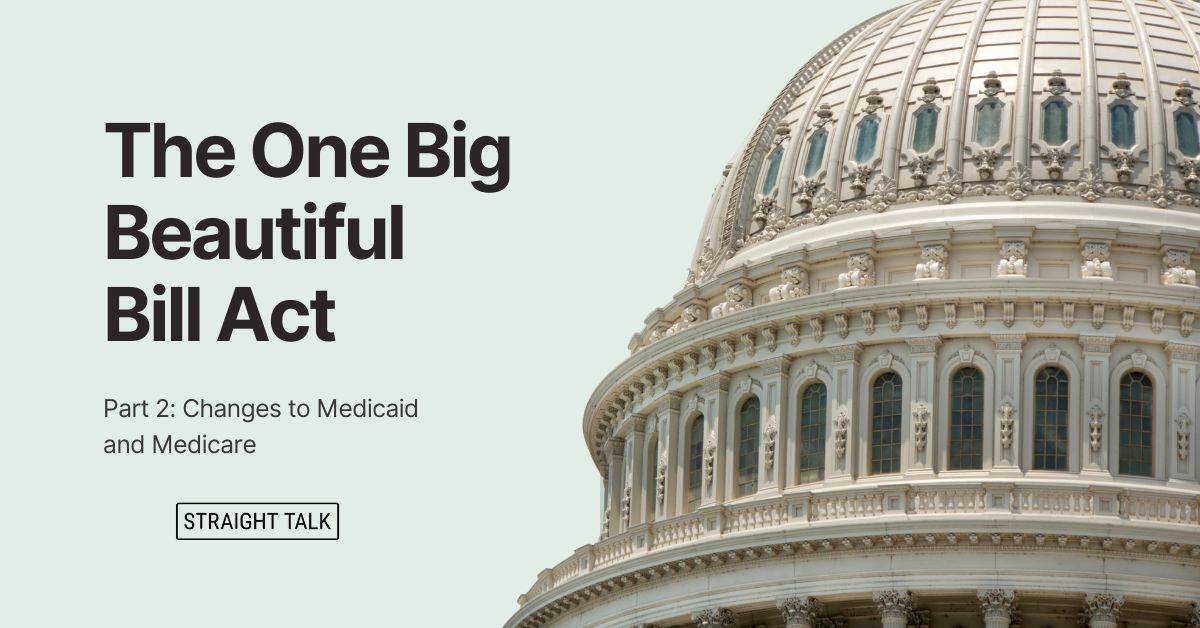This is part three of a three-part series explaining the origins of the Affordable Care Act (ACA) and issues that have arisen, leading up to the currently pending lawsuit to do away with the ACA. Part Iand Part II .
So, what went wrong with the ACA’s creation that caused the “cracks in the foundation”?
You might recall I said the Democrats effectively controlled 60 seats in the Senate starting in January 2009. To get big bills like the ACA through the U.S. Senate, you have to get 60 people to vote for it.
In August 2009, Democratic Sen. Ted Kennedy of Massachusetts died. He had held his Senate seat for 47 years, since 1962. The Massachusetts governor appointed Democrat Paul G. Kirk to hold Sen. Kennedy’s seat until a January 2010 special election could be held. Kirk voted YES on the Affordable Care Act, and the Senate version of the ACA was quickly finished. The Democrats voted it through with their 60 votes on Dec. 24, 2009, at about 10 p.m. D.C. time.
But then, the special election happened.
An Oops from Massachusetts
No one, including me, DREAMED the “Kennedy Seat’ was in any kind of danger from a Republican challenger. Certainly not in Massachusetts. Certainly not that seat whose last Republican occupant had been Henry Cabot Lodge in 1953! The Democrats ran Martha Coakley, then Attorney General of Massachusetts, and assumed she was a slam dunk.
Oops.
Elected as a Senator to Massachusetts’ vacant seat in January 2010 was Scott Brown, a Republican and current U.S. Ambassador to New Zealand and Samoa, who ran on “Killing Obamacare!” Turns out, not everyone in deep blue Massachusetts was enthralled with the Washington, D.C. version of healthcare reform because Massachusetts had passed its own state version of healthcare reform four years earlier, and it was working very well. The federal version undid some of their progress, which many saw as federal overreach.
By 2010, the Democrats had a huge problem. They no longer had 60 votes in the Senate they could count on to pass the ACA when it came back from the House of Representatives. So now the House gets its turn, but their movement is limited because no matter what the House does to the original ACA, they know the Senate can’t touch it again.
To make matters worse, because the Democrats didn’t expect this to happen, the bill they passed on Christmas Eve 2009 was essentially a rough draft of what they wanted to accomplish, nowhere near ready to be actually put into action in the U.S. healthcare space.
Were they really going to remake 18 percent of the economy using a rough draft of a bill?
The Act of Reconciliation
Creative legislative minds start turning: The Democrats COULD pass a bill through the Senate with just 51 votes, using an arcane process called “reconciliation,” but there are very strict limits about what you can adjust or change with only 51 votes. It’s almost entirely limited to financial things, budgetary things, but not sweeping policy and market changes like the rough-draft ACA had in it (and it had already passed the Senate.)
Under Senate guidance, the leadership in the House created a new bill: The Health Care and Education Reconciliation Act (HCERA), which was designed to specifically tidy up a few things left out of the ACA bill that the Senate passed, to put in firm authority most of the spending in the ACA (so that it couldn’t be tampered with by executive order of the president, but would require the full Congress to undo) and to try and clean up the inconsistencies in the bills that SHOULD have been taken to conference committee offsite and worked out between the House and Senate.
After much negotiation with the Senate Parliamentarian about what they could include in a bill and pass with 51 votes, the Democrats had to move quickly.
The House and Senate finished the supplemental bill, the HCERA, and had both it and the ACA on President Obama’s desk by March 2010 (not Labor Day). He signed both in a huge ceremony on March 23, 2010, making both the working document and the financial bill law. What went unnoticed in that signing ceremony were a couple of adjustments made because of the “new” process:
- First, the Punch List had to be massive to compensate for all the missing pieces in the final bill. In fact, at last count, it took 90,000+ pages of new federal regulations (Congress did not touch these) from the executive branch to make the ACA work. Certainly, that was not the original intent at all.
- Second, the start of the important parts of the ACA was pushed back to 2014, and in some cases, enforcement was pushed back to as late as 2016. Again, this was a direct result of having to “fix the bill in the regulatory process,” as Speaker Pelosi said several times.
But none of these issues slowed the celebration. The parades and triumphant declarations began immediately. It was a big day for them, delivering on a campaign promise many years in the making.
But… (don’t you hate it when there is a “but”?)
In all the haste and deal-making, the final drafters of the ACA/HCERA forgot “Bill Writing 101” and left something very important out of the ACA.
2010’s Omission, Today’s Lawsuit
You see, anytime you create a new bill/law/act, the best way to defend it against the opposition party taking it down en masse is to insert a bit of legislative language called a “severability clause.” This clause states simply that each section of the new law stands on its own, and, if challenged in court, unconstitutional parts can be removed without taking down the entire law.
The drafters of the ACA, in their haste, neglected to insert a severability clause into the bill. There has been rampant speculation as to why this happened but, whether it was an oversight or done deliberately, it’s not there. Meaning that, theoretically, if any single part of the ACA were ever declared unconstitutional, the entirety of the law was at risk.
This particular crack in the foundation is the root issue of the current lawsuit and pending future of the ACA. And it did earlier, in 2012. I’ll bring you up to speed on that soon.
Ultimately, all the arguments about Texas v U.S., or Texas v Azar that prompted the decision issued on Friday, Dec. 14, will track back to this omission. From today on, the argument is strictly going to be about severability.
More to come…
Part I: Cracks in the Foundation
Part II: Best-Laid Plans





Well written commentary on PPACA. Couple the commentary in this three part series with a look at other underlying efforts and the picture of this law and its subsequent regulations paint a broader picture of how PPACA was set up as a tool for other less well known administration goals.
Maybe Mike can expand the series on how the Obama administration and those around him planned to use the law to support federal funding needs and to forever change by whom health insurance was provided.
Case in point, the punitive employer and individual mandate penalties. At a time of severe Federal fiscal revenue needs, PPACA enforcement rules and regulations were being written to generate revenue for the federal treasury. In the same time, if companies determined paying non-offering penalties was cheaper than providing coverage, higher percent of premiums and potential non-tax deductible penalties for compliance errors, single payer becomes a more obtainable goal.
As it relates to penalties for example, take simply filing 1095-C forms incorrectly or non-timely filing of the forms. Penalties were written in amounts which effectively were business killing penalties for thin margin businesses. Had Kathleen Sebelius, HHS, the IRS and DOL been better prepared to roll out efficient enforcement actions in 2014, businesses across the country would have faced significant regulatory and financial headwinds. Instead, enforcement provisions were delayed, the party in total power lost total power, court rulings and partial repeals chipped away at the ultimate long term goals of the drafters.
Secondly, business failure to accurately apply PPACA safe harbor affordability provisions put businesses in jeopardy of a whole other set of penalties. While insurance companies moved fast and effectively to comply with MEC and other provisions targeted at their industry, businesses were left struggling how to deal with a complex law and ever expanding set of regulations. To this day, businesses still struggle to understand PPACA.
I could go one about the last 9 years but I prefer to cede to Mike in hopes he will dive into some of the sub-stories of PPACA in future articles. Great job Mike…
Glenn!
Well-thought out and lucid commentary. Having dealt with the ACA, and the 90,000 subsequent pages of federal regulation issued on its behalf, I keep going back to that process that allowed a partially finished, rough draft of a Bill to be passed by both Houses of Congress and signed by the President of the United States and wonder how this was possible? The fact that it manipulated some 20% of GDP….$3.5 Trillion annually in redirected healthcare spending is even more amazing.
Dealing with it has been an exercise in flexibility for both carriers and businesses trying to do the right thing by their employees.
The Battle continues!….Merry Christmas!…mrb